168: Difference between revisions
Pbcjohnston (talk | contribs) Added 168 launch link |
Pbcjohnston (talk | contribs) m Reformatting and moving pictures |
||
| Line 3: | Line 3: | ||
[[File:Nautilus build-1.jpg|left|500px]] | [[File:Nautilus build-1.jpg|left|500px]] | ||
<div style="text-align: justify;"><span style="color:#00008B">Scaffolding being erected at Mare Island Navy Yard, Building Ways #2, Vallejo, California, April 14, 1927 in preparation for the start of construction for the V-6. The scaffolding in which the V-6 will be built is almost complete, even including the cofferdam around the stern since this portion extends down to the water level at the foot of the ways. You can see the water lifting pump and hoses to keep the cofferdam area water free at the photo's bottom. | <div style="text-align: justify;"><span style="color:#00008B">Scaffolding being erected at Mare Island Navy Yard, Building Ways #2, Vallejo, California, April 14, 1927 in preparation for the start of construction for the V-6. The scaffolding in which the V-6 will be built is almost complete, even including the cofferdam around the stern since this portion extends down to the water level at the foot of the ways. You can see the water lifting pump and hoses to keep the cofferdam area water free at the photo's bottom. | ||
[[168 launch|Click here for a large collection of V-6 launch photos]] | |||
<small>U.S. Navy photo courtesy Darryl Baker</small> | <small>U.S. Navy photo courtesy Darryl Baker</small> | ||
Revision as of 16:56, 25 June 2023
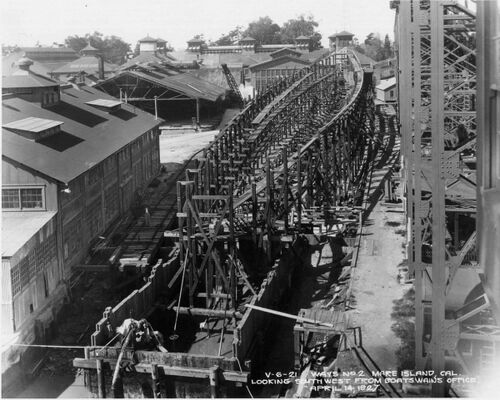
Click here for a large collection of V-6 launch photos
U.S. Navy photo courtesy Darryl Baker
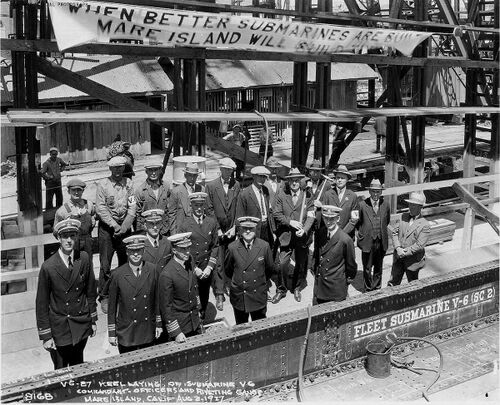
From left to right: Front row; LT J. W. (Duke) Paige, C.C., Ship Supt; CDR E. L. Patch, C.C., Asst. Inside Supervisor, New Work Hull (In general charge of Keel Laying Arrangements); CDR F. J. Wille, Outside Supt.; CAPT C. S. McDowell, Inside Supt.; LCDR W. C. Wade, Asst. Shop Supt.; RADM J. H. Dayton, Commandant Mare Island Navy Yard; CDR E. D. (Bill) Almy, Shop Supt.; J. T. Moroney, Master Shipfitter.
Back Row: Fred Coppo, Rivet Heater; A. P. Schneidewind, Riveter; J. F. Nichelini, Holder-on (all members of regular riveting gang); Honorary Riveting Group: A. L. Luck, Leadingman Shipwirght "Riveter"; W. L. Blackmore, Leadingman Pipefitter "Rivet Passer"; J. E. Moon, Leadingman Machinist "Rivet Heater"; Charles Deaver, Quarterman Riveter "Rivet Heater"; Tom Schofield, Master Rigger & Laborer "Holder-on"; B. A. (Bert) Barr. Quarterman Shipfitter "Riveter"; F. W. Savage, Quarterman Electrician "Rivet Tester"; J. R. Greig, Asst. Shop Supt. "Rivet Tester.
The primary construction method was obviously riveting. But at this time there were experiments underway at Navy yards to incorporate welding. Although not shown in this photo, some non-critical areas such as pipe brackets, superstructure supports, and interior deck joinery were welded.
U.S. Navy photo courtesy Darryl Baker
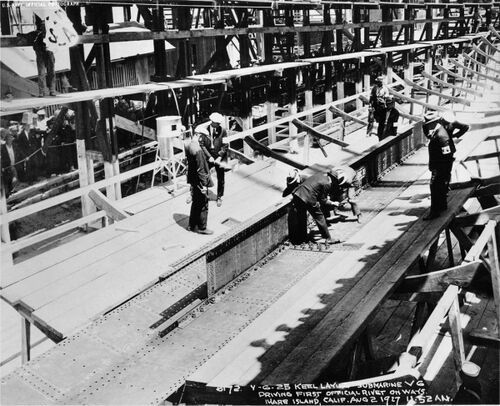
U.S. Navy photo courtesy Darryl Baker
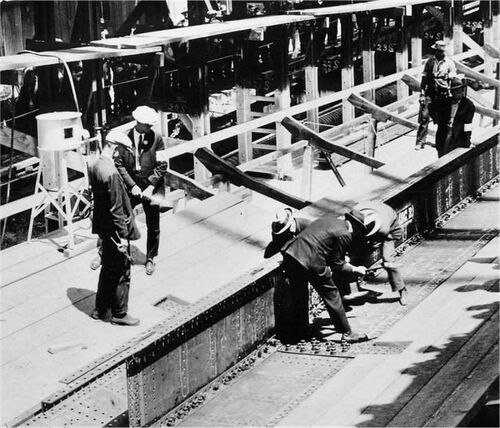
U.S. Navy photo courtesy Darryl Baker

U.S. Navy photo courtesy Darryl Baker
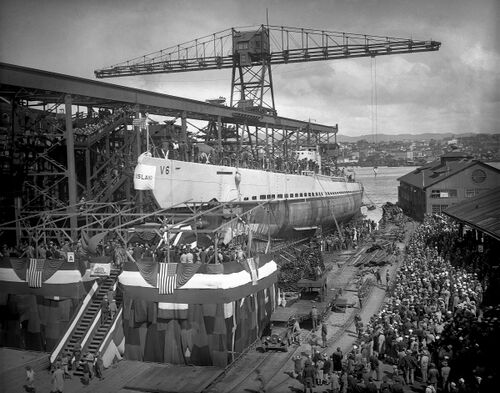
From orignial glass plate negatives in the private collection of Ric Hedman.
Click here for a large collection of V-6 launch photos
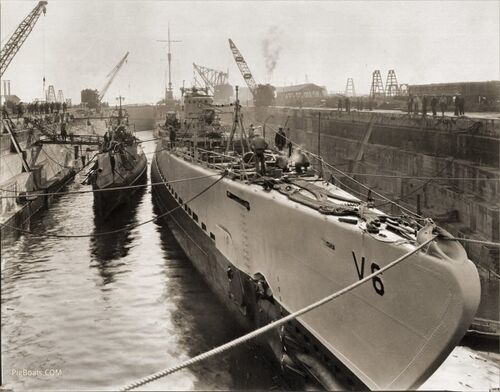
Photo in the private collection of Rid Hedman.
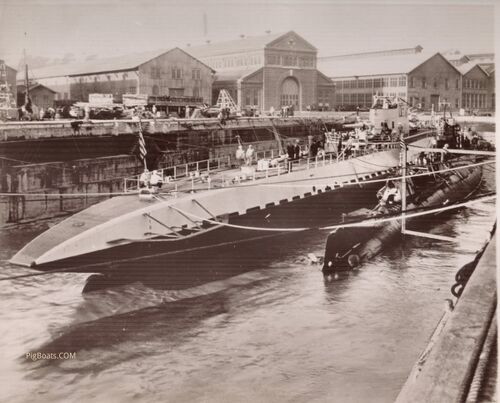
Photo in the private collection of Rid Hedman.
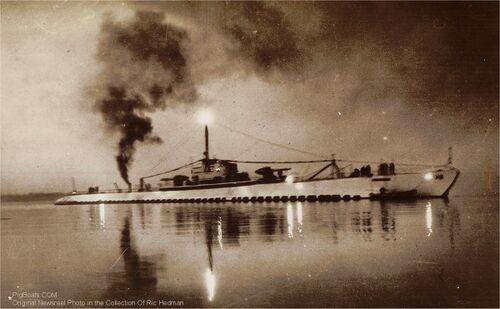
It appears that the V-6 has an oil fired boiler or furnace in her engine room, similar to V-4, as indicated by the heavy black smoke coming from a stack in her after deck. As far as we can tell this is the only photo known to show this feature on V-6. It doesn't seem to be mentioned in any literature about her.
All her running lights and anchor lights seem to be lit and reflecting in the calm pre-dawn waters. The dateline is Seattle, Washington so this may be Puget Sound. The photo is a bit fuzzy probably since the photo was taken from a small boat in the water near the V-6, maybe even from one of her own boats. One of them is seen in the water by the bow planes.
Original Newsreel photo in the private collection of Ric Hedman.
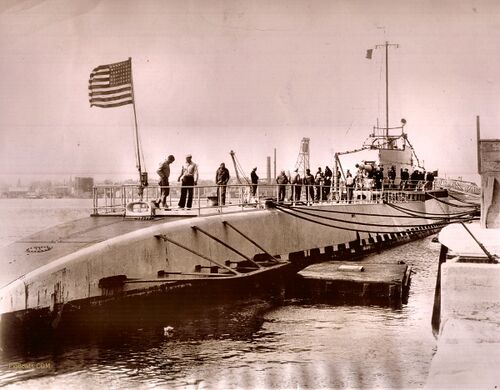
Newspaper Wire photo in the private collection of Ric Hedman.
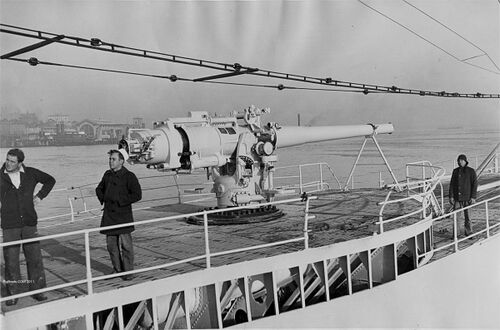
The building in the background is the old St. Georges Ferry Terminal on Staten Island. It burned to the ground in 1946. According to retired Navy Commander Gerald Levey USN, a native of New York; "The ferry terminal is definitely the St George terminal, The ferry, (to the left of the building, twin stacks), is one of the five Dongan Hills class built in 1931. You can date the photo between 1931 and 1946 when the old terminal burned to the ground. It is a rare photo as the three definitive books on the Staten Island Ferries have no decent photos of that terminal as seen from an approaching ferry."
The truly massive size (for a submarine at least) of the 6"/53 caliber guns is very evident in this photo. These were the largest guns ever mounted on a USN submarine.
Photo in the private collection of Ric Hedman.
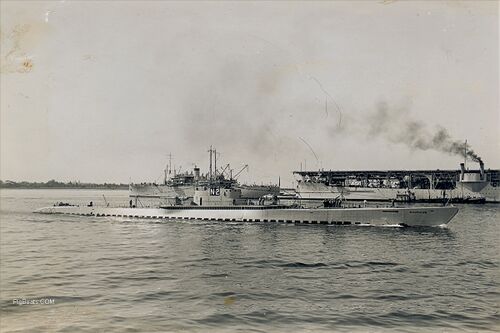
Various crew are on deck aboard Nautilus and it is unclear if she is heading to sea or returning. There isn't any obvious line handling activity going on.
Original Photo in the Private Collection of Ric Hedman
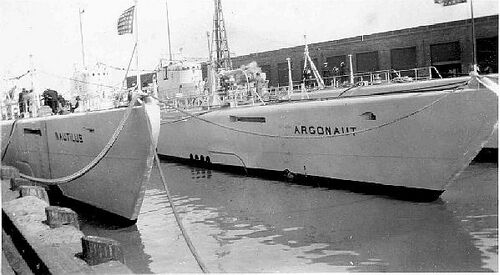
U.S. Navy photo
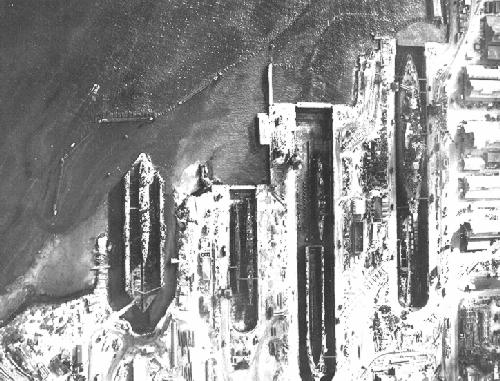
U.S. Navy photo
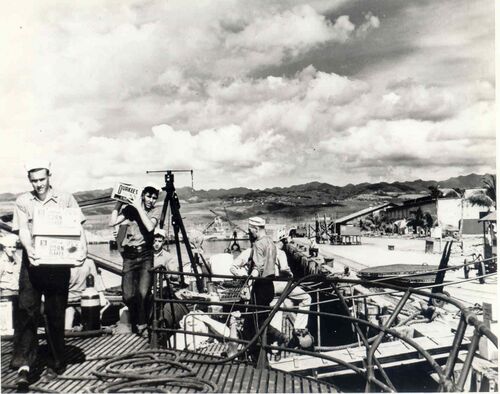
Barely visible in the photo is a large section of deck that has been removed to gain access to the systems in the free flood area. The sections removed can be seen on the pier to the right and above the gangway.
US Navy Photo in the private collection of Ric Hedman
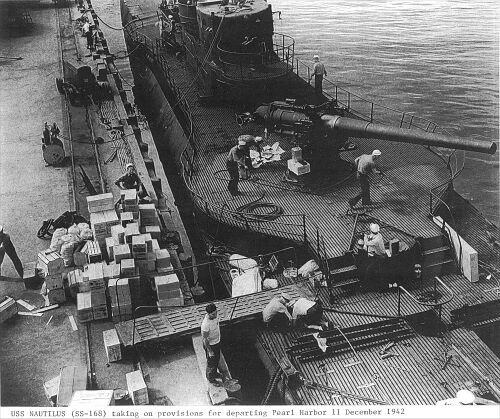
US Navy Photo in the private collection of Ric Hedman
Page created by:
Ric Hedman & David Johnston
1999 - 2023 - PigBoats.COM©
Mountlake Terrace, WA, Norfolk, VA
webmaster at pigboats dot com
